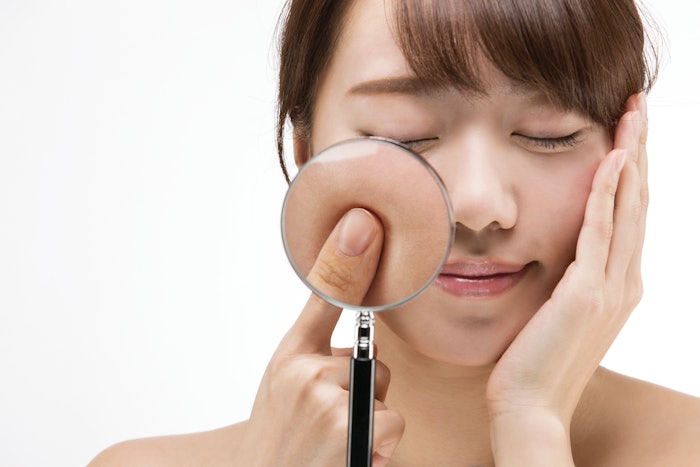
Maintaining the integrity of the skin barrier and exploring the skin’s microbiome are two of today's most popular trending topics. Significant emphasis has been placed on protecting the skin's surface through products categorized as "barrier repair” solutions. Nonetheless, a substantial need remains for further investigation and understanding of the complex interactions between the skin microbiome, essential lipids and their respective roles in maintaining and protecting skin barrier health. It is necessary to acknowledge that products advertised for “barrier repair” may not effectively address complex concerns or promptly restore skin vitality, given the critical physiological processes for maintaining skin health.
This article is only available to registered users.
Log In to View the Full Article
Maintaining the integrity of the skin barrier and exploring the skin’s microbiome are two of today's most popular trending topics. Significant emphasis has been placed on protecting the skin's surface through products categorized as "barrier repair” solutions. Nonetheless, a substantial need remains for further investigation and understanding of the complex interactions between the skin microbiome, essential lipids and their respective roles in maintaining and protecting skin barrier health. It is necessary to acknowledge that products advertised for “barrier repair” may not effectively address complex concerns or promptly restore skin vitality, given the critical physiological processes for maintaining skin health.
Structurally, the epidermis acts as a robust physical barrier, effectively resisting the penetration of microorganisms and potential toxins while retaining moisture and crucial nutrients within its layers. The epidermis represents a dynamic system characterized by continuous proliferation and differentiation, involving the integration of keratinocytes, melanocytes and immunocompetent cells. The complex composition of the stratum corneum is critical for the skin's barrier function, with its corneocytes embedded in a matrix of multiple lamellar lipid layers. The skin also possesses unique physical and chemical properties, creating an environment suitable for specific microorganisms. The interaction among the skin microbiome, lipids and skin barrier function is highly complex, with each component playing a vital role in maintaining skin health and preventing disease.
The skin’s microbiome, consisting of billions of microorganisms, closely interacts with the epidermal lipids that comprise the skin’s outer barrier, significantly influencing its integrity and functionality. Importantly, our skin serves as a crucial site for microbial-host interactions and features a multifaceted landscape enriched with lipids and proteins, accompanied by a diverse array of follicles and glands that create unique physical and chemical environments.
Viewing the skin as an ecosystem of living biological and physical components across different habitats deepens our understanding of the intricate balance between the skin and the microorganisms that reside within it. Alterations in the relationship between the host and microorganisms can occur due to internal and external factors. When this delicate equilibrium is disturbed, it may result in dermatological concerns. The stratum corneum and the lipid barrier, which maintain their integrity, are essential for preserving skin health. These components can transmit various signals to the living epidermis beneath, influencing the regenerative processes occurring in the deeper layers of the skin.
The skin’s immune system relies heavily on the close interaction and communication among immune cells and the surrounding dermal environment, encompassing neighboring keratinocytes and fibroblasts. The efficacy of skin immunity is directly contingent upon the flexibility of dermal vessels and lymph nodes that facilitate lymphatic drainage. An imbalance within the immune system may lead to chronic inflammatory skin diseases. Furthermore, the interactions between skin microbiota and the immune system significantly shape the immune responses triggered within the skin. The epidermis performs the skin’s protective functions, while keratinocytes and immune cells synthesize pro-inflammatory and antimicrobial molecules. The microbiota plays an essential role in the host immune system, with specific components of the skin microbiome promoting protective immunity. Both keratinocytes and immune cells are crucial for environmental sensing, functioning as the primary line of defense against external threats, and they are integral to various antimicrobial responses. The epidermal layers constitute a very complex system that continuously adapts to maintain its structural integrity and identifies even the most minor alterations.
The Microbiota & Microbiome
The biodiversity of our unique ecosystems significantly influences the complexity of the skin’s habitat. The microbiome represents a distinct ecosystem of the skin's microbiota, with extensive research focused on the relationship between the microbiome and its interactions with various skin conditions. Acting as a gateway to the external environment, the microbiome connects multiple elements of skin health. A deeper understanding of the skin microbiome is crucial for gaining insights into microbial involvement in skin disorders, as the skin’s surface ecology shapes microbiome colonization. Symbiotic relationships regulate pathogenic interactions, barrier functions, host immune responses and the progression of skin disorders such as atopic dermatitis, acne and psoriasis. The term "microbiota" refers to the specific community of bacteria residing within a given environment, whereas the "microbiome" encompasses the bacteria, their genetic makeup and their interactions with the host. Microbiota organisms are not limited to the skin's surface; they also inhabit hair follicles, sebaceous glands and sweat glands, extending beneath the epidermis into the dermis.
The skin's surface hosts a diverse community of microorganisms, including commensal bacteria, which play a critical role in maintaining the health of the skin's ecosystem. These beneficial bacteria help prevent the proliferation of transient pathogens by competing for nutrients, producing antimicrobial substances and eliciting the skin's immune response. Moreover, the skin's microbiome significantly influences barrier function, surface lipids and pH levels.
Disruption of the skin microbiome may result in inflammation, compromised barrier function and chronic dermatological conditions. Such disruptions can subsequently impact the regulation of keratinocytes and the skin’s overall health. The delicate balance of microorganisms on the skin is essential for preventing the onset of skin diseases, including atopic dermatitis, acne and psoriasis. Bacteria within the dermis clarify why cells beneath the skin’s surface respond to substances produced by commensal microbes. Research has established a correlation between skin microbiome disruptions, heightened sensitivity and inflammatory conditions, indicating a relationship between skin health and the equilibrium of microorganisms on its surface. Moreover, studies have shown that sensitive skin often has a less diverse microbiome, characterized by reduced levels of S. epidermidis, particularly in areas with higher moisture content and less exposure to inflammation. Significant consideration should be given to the intricate interplay among microorganisms, the immune system and the skin's environment.
Behold the Biofilms
Although the skin microbiome includes all microorganisms living on the skin, many of these microorganisms form communities known as biofilms. These biofilms resemble colonies of microorganisms encased in a protective mucilage matrix, creating a favorable environment for the skin's microbiota to thrive. Forming these biofilms is crucial for the skin microbiome, as they are essential in protecting against pathogens, regulating the immune system and enhancing the skin's natural barrier function, ultimately supporting overall skin health. Biofilms can vary in population from tens of cells to hundreds of thousands and may include multiple species of organisms. Microorganisms within biofilms adapt to life on surfaces by making metabolic changes, such as producing substances that maintain the cohesion of bacterial communities and regulate specific genes. (1,2)
The Stratum Corneum
- Antimicrobial defense
- Formation of lipid bilayers and development of free fatty acids
- Hormone receptor functions
- Immune and neuronal response
- Intercellular cohesion & resiliency - dependent upon the epidermal lipids (EL) and corneodesmosomes
- Permits movement and skin flexibility, contributes to elasticity
- Prevents loss of essential fluids and electrolytes, regulates water balance
- Produce antimicrobial agents
- Programmed to desquamate, catalyzed by serine proteases (enzymes)
- Protection: photoprotection, microbes, chemicals, environmental, mechanical
- Provides permeability of exogenous and endogenous substances
- Psychosensory
- Regulates TEWL within a changing environment (adaptive ability)
- Retains moisture for proper enzymatic desquamation
- Supports the microbiome
The connections among corneocytes constitute the intercellular lipid membrane, which comprises approximately 20% of the total volume of the stratum corneum (SC). This membrane serves a vital function in the physiology of the stratum corneum, particularly regarding water movement and balance. For optimal function, the intercellular lipid membrane is carefully organized to contain specific amounts of certain lipids, creating a network of ceramides (40–50%), cholesterol (25%) and free fatty acids (10–15%). These lipids have distinct structural properties that support the effectiveness of the epidermal barrier. The structural and functional integrity of the stratum corneum (SC) relies on adequate water content and gradient levels. Several enzymes that facilitate vital SC functions are hydrolytic (water-reactive) and become less efficient when water content falls below a critical threshold.
To maintain physiological epidermal water content, the SC has intrinsic self-repair mechanisms that can address external factors inducing harmful changes to its permeability barrier.
Importantly, the water content in the stratum corneum (SC) is critical for maintaining its cohesion, enhancing elasticity and reducing epidermal rigidity. Adequate water levels influence various physical properties, including flexibility, pliability, corneocyte desquamation, skin pH and cornified cell envelope formation. (3)
Exposures That May Increase TEWL
- Aggressive exfoliation – scrubs, loofas, electronic brushes
- Air conditioning
- Alcohol
- Allergens – all forms
- Chemical peels – AHA, BHA, TCA
- Detergents, soaps
- Environmental exposures – PMs, O3, VOC’s, UVR
- Excessive vitamin C, retinoids
- Extreme temperature fluctuations
- Formaldehyde
- Fragrance
- Hair removal - waxing, chemical epilation
- Mechanical treatments: dermaplaning, microdermabrasion, IPL
- Misaligned skin care products
- Phthalates
- Saunas – dry heat, Infrared
- Smoking, vaping
- Stress
- Sudden drops in humidity
- Sulfates
- Sun exposure
- Topical RX (Tretinoin, BPO, etc.)
Compromised or Damaged Skin Barrier Characteristics
- Acne
- Bacterial, viral or fungal skin infections
- Chronic skin irritation
- Chronic or prolonged skin infections
- Corneocyte compaction
- Dehydrated, dull skin
- Delayed wound healing
- Dry, scaly skin
- Eczema
- Hyperpigmentation, dyschromia’s
- Inflammation
- Increased sensitivity
- Itchiness
- Redness
- Rough or discolored patches
- Sensitive or inflamed areas
- Stinging
- Susceptibility to infections
- Thick patches of skin
Barrier Benefits
Typically, the epidermal barrier refers to the role of the stratum corneum (SC) in regulating water loss, maintaining moisture and allowing certain substances to pass through. However, the SC serves many additional functions beyond simply acting as the epidermal permeability barrier. The diverse barrier functions of the SC are intricately interconnected through positive and negative feedback loops and biosensors that detect imbalances, triggering self-repair mechanisms. The efficacy of the skin barrier is contingent upon specific molecules present in the lipid layers of the extracellular matrix. These molecules are derived from organelles within skin cells, predominantly located in the stratum granulosum and are synthesized by lamellar bodies. Moreover, the functionality of the barrier is dependent on various enzymes that exhibit sensitivity to pH, which assist in preserving the components of the lipid layers. The acidic pH of the skin is paramount in facilitating antimicrobial defense mechanisms, enhancing barrier stability, promoting the integrity of skin cells and augmenting the efficacy of enzymes, all of which are critical for sustaining a healthy skin barrier. The skin's pH significantly influences the presence of various bacterial types, such as Staphylococci, which prefer acidic environments.
Beneficial epidermal bacteria are instrumental in maintaining a low pH and facilitating the production of protective chemicals. A compromised skin barrier can result in an elevated pH level, which, in turn, promotes the proliferation of pathogens such as S. aureus, which is associated with atopic dermatitis and impairment of the skin barrier.
Stratum corneum lipids are critical in blocking harmful substances and safeguarding the skin. These essential lipids are derived from amino acids, carbohydrates and phospholipids, supporting the stratum corneum formation.
Ceramides, present intracellularly, extracellularly and in the lipid bilayers, are synthesized from sphingolipids in the stratum corneum and are vital for barrier function. Maintaining adequate hydration and a slightly acidic pH is crucial for enzymatic function, as acids produced by the oxidative breakdown of barrier components lower the pH, supporting commensal flora and inhibiting pathogens. When permeability is compromised, lamellar bodies are produced to repair and restore barrier function quickly.
Immunity Barrier – The skin acts as a crucial defense barrier, activated by specific receptors, cells, cytokines and chemokines, to protect against pathogens, regulate inflammation and maintain homeostasis. Numerous immune cells and antimicrobial peptides (AMPs) facilitate communication to regulate appropriate immune and neuronal responses. Various receptors, cells, cytokines and chemokines respond in patterns characteristic of both innate and adaptive immune responses. Dendritic cells are essential for immune surveillance and antigen recognition, including plasmacytoid dendritic cells, myeloid dendritic cells and Langerhans cells. Toll-like receptors are vital for detecting microbial pathogens and other stimuli.
Antimicrobial Barrier – Defensins found in the lipid membrane, sweat, sebum and stratum corneum (SC) lipids significantly enhance the human body's defenses. The primary defense layer consists of surface-deposited free fatty acids, antimicrobial peptides and a cohesive and well-formed SC that establishes a robust barrier against microbial entry. Furthermore, the low pH of an intact stratum corneum (SC) helps inhibit the growth of pathogens. Moreover, specific antimicrobial peptides and amphiphilic lipids, particularly sphingosine and free fatty acids, play a critical role in this defense mechanism by suppressing microbial growth and reducing the risk of infection.
Permeability Barrier – The stratum corneum layer is composed of corneocytes, which are fully matured keratinocytes encased in a matrix of neutral lipids that primarily includes ceramides, cholesterol and free fatty acids. This lipid matrix within the layer inhibits the transdermal passage of water and electrolytes.
Antioxidant Barrier – Antioxidants exist in the epidermis, especially in the stratum corneum, skin surface lipids and dermis. This barrier, a network comprising enzymatic and non-enzymatic antioxidants, is activated to combat oxidative stress. Superoxide dismutase and protective systems defend against reactive oxygen species (ROS), including interceptive enzymes like catalase, glutathione peroxidase and various repair enzymes.
The Skin’s Lipidome
The skin is a central hub for complex lipid metabolism, with lipids being essential for its function, influenced significantly by nutritional factors. The term "skin lipidome" refers to the diverse array of lipids in the body, including those in the epidermis and sebaceous glands. This diversity entails ceramides, cholesterol and free fatty acids, among other lipid classes. Through the investigation of various lipids within the skin, the field of skin lipidomics enables researchers to comprehend the role of lipids in skin health and disease. The lipidome is instrumental in shaping the skin’s microbiome and facilitating its barrier function, specifically by regulating the movement of water and electrolytes across the epidermis. Each category of lipids in the skin possesses distinct properties and fulfills specific functions. For example, sebum contains lipid species that maintain the skin's waterproof capabilities and support its microbiota. Additionally, lipids in skin cell membranes, including phospholipids, cholesterol and glycolipids, are critical for protein activity, cellular movement and intercellular communication.
The composition of lipids varies according to skin depth and is affected by factors such as age, sex, hydration, transepidermal water loss (TEWL) and overall skin structure. Moreover, these lipids are vital for cellular structure, metabolic processes and signaling.
Sebaceous glands function in low-oxygen environments, facilitating the proliferation of certain bacteria, including Cutibacterium acnes. Through sequencing the complete genome of C. acnes, researchers have identified numerous genes that encode lipases, enzymes that catalyze the breakdown of fatty acids in sebum. C. acnes metabolizes triglycerides found in sebum, releasing free fatty acids onto the skin. These bacteria can adhere to the free fatty acids, potentially aiding in colonizing the sebaceous gland. Cutibacterium acnes relies significantly on sebum as a primary source of nutrition, given that sebum comprises fatty acids and other lipids, which these bacteria utilize for energy and growth stimulation. Lipids, such as sapienic acids and triglycerides, can be broken down by microbes into free fatty acids due to the antibacterial effects of palmitoleic and oleic acid. Components like phosphatidylcholine, essential fatty acids and ceramides provide significant protection for the barrier, as they mimic the effects of sebum. This not only helps with barrier repair but also reduces skin irritation.
STRATUM CORNEUM LIPIDS: Represent 20% of the SC volume
- Ceramides – 40-50%
- Free Fatty Acids – 10-15%
- Cholesterol – 25%
SEBUM & SKIN SURFACE LIPIDS – CHOLESTEROL & DERIVATIVES
- Cholesterol
- Cholesterol esters
- Diglycerides
- Free fatty acids
- Glycerides
- Lipid esters
- Squalene
- Traces of urea
- Triglycerides
- Wax esters
VITAMINS INVOLVED IN LIPID METABOLISM*
- Metabolic regulation: Vit. D3, D, B3, B7, B9, B5
- Lipid synthesis & oxidation: Vit. A, B1, B12, B6,
- Antioxidant & protective roles: Vit. E
- Lipid transport & transformation: Vit. C
ESSENTIAL FATTY ACID FUNCTIONS
- Cell membrane fluidity
- Superficial lipid film
- Intercellular cohesion
- Precursors for inflammatory mediators
- Defense against microbes
Repairing the Barrier
When the stratum corneum (SC) detects a slight increase in moisture loss, it promptly activates a self-repair mechanism by releasing stored lipids and enhancing the production of new lipids. This process is crucial for restoring the integrity of the skin's lipid membrane and improving its ability to retain moisture. When compromised or excessively dehydrated, the dermal layer activates adaptive mechanisms to restore its structural integrity and functionality.
Corneocytes are shed as nearly imperceptible cells from adequately hydrated skin, preserving the epidermal layer and the stratum corneum (SC). Clinically, a healthy SC is characterized by its pliability and the absence of scaling or dehydration. Conversely, dehydration slows the degradation of corneodesmosomes, leading to the clustering of corneocytes before their shedding, which ultimately results in roughness, scaling and flaking. This condition is referred to as xerotic skin, presenting as scaly and lackluster.
A crucial part of the stratum corneum's self-repair mechanism is the increased synthesis of filaggrin, which eventually converts into natural moisturizing factors (NMF). These NMFs greatly improve the skin's ability to hold moisture and assist in reversing water loss. Filaggrin acts as an essential component in both aspects, influencing its degradation products and its role in lipid processing within the stratum corneum. Profilaggrin primarily contains L-histidine, and its subsequent proteolytic breakdown releases significant amounts of L-histidine, thus contributing to the NMF. Other components of the NMF include pyrrolidone carboxylic acid, urocanic acid, lactic acid, urea, citrate and various sugars. These compounds are often added to moisturizers to enhance the skin barrier function.
One of the primary objectives of the skin barrier is to maintain hydration, which serves as a key indicator of therapeutic responsiveness in inflammatory skin disorders. The primary methods for achieving barrier moisturization involve the moisture-sealing barrier formed by intercellular SC lipids and the hygroscopic agents on the skin's surface. Researchers have found that applying a single layer of emollient-containing lipids, closely resembling the skin’s natural structure, significantly enhances skin hydration after twenty-four hours. When applied topically, physiological lipids such as ceramides, free fatty acids and cholesterol are absorbed into the skin's lipid matrix, supporting the natural lipid synthesis and secretion processes. It has been demonstrated that an emollient containing these three lipids, particularly with elevated ceramide content, improved hydration and reduced skin water loss in patients with atopic dermatitis compared to petrolatum-based moisturizers. Additionally, both occlusive and ceramide-containing moisturizers have been shown to significantly reduce transepidermal water loss (TEWL) after two weeks, likely due to the application of a hydrophobic layer on the SC and the incorporation of a physiological barrier lipid into the SC.
Regarding the skin barrier and its collaborative players, it is vital to view it as one of the body’s most unique organs. As complex as it is, its care must be based on both clinical and subclinical observations, since much of its health depends on what we don’t see. Overprocessing of the skin, whether through chemical peeling, needling, exfoliation or the misuse of home care products, negatively impacts the skin's appearance and vitality. In a progressive approach, we may adopt the concept of sustained functionality when designing our treatments, selecting our products and ingredients and educating our clients.
BARRIER SUPPORTIVE EXAMPLES
- Allantoin
- Beeswax\lanolin
- Beta glucan
- Castor oil
- Ceramides
- Cholesterol
- Cocoa butter
- Colloidal oatmeal
- Glycerin
- Grapeseed oil
- Hyaluronic acid
- L-Histidine
- Lactate
- Lactic acid
- Magnesium sulfate
- Mineral oil
- Niacinamide
- Olive oil
- Panthenol
- Peptides
- Petrolatum
- Probiotics
- Propanediol
- Propylene glycol
- Pyrrolidone carboxylic acid (PCA)
- Shea butter
- Silicone
- Sorbitol
- Squalane
- Sunflower oil
- Tocopherol
- Urea
- Vitamin F
- Zinc oxide
References
https://www.nature.com/articles/s41522-016-0004-z
https://pmc.ncbi.nlm.nih.gov/articles/PMC3535073/
https://karger.com/spp/article-pdf/36/4/174/4047631/000534136.pdf
https://pmc.ncbi.nlm.nih.gov/articles/PMC10706187/
https://pmc.ncbi.nlm.nih.gov/articles/PMC2674689/#s
barrier.https://jcadonline.com/fundamentals-of-skin-barrier-physiology/
https://pmc.ncbi.nlm.nih.gov/articles/PMC3175800/
https://karger.com/spp/article-pdf/36/4/174/4047631/000534136.pdf










